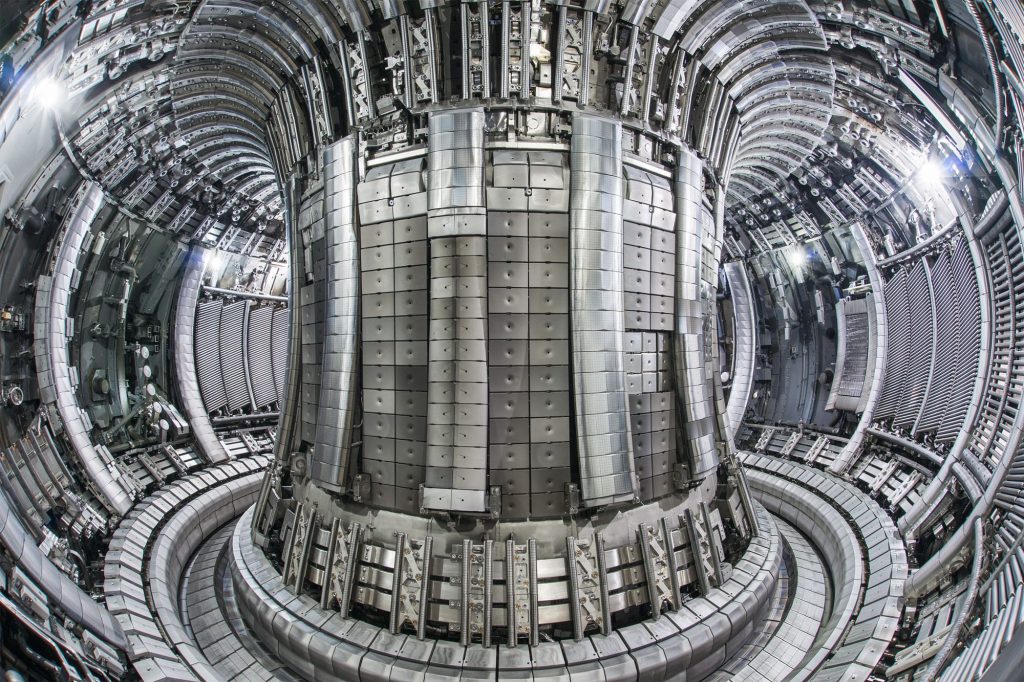An international team of scientists reached a significant milestone in the quest to harness nuclear fusion, the power of stars, as a means of creating a sustainable carbon-free energy source.
A team of researchers at the UK Atomic Energy Authority’s Joint European Torus (JET) facility in Oxford achieved a record-breaking 59 megajoules of sustained fusion energy. The results demonstrate the powerplant potential of this energy source, the UK Atomic Energy Authority (UKAEA) announced on Wednesday.
“These landmark results have taken us a huge step closer to conquering one of the biggest scientific and engineering challenges of them all. It is reward for over 20 years of research and experiments with our partners from across Europe,” said chief executive of UKAEA Ian Chapman in a statement.
The 59 megajoules of heat energy from fusion were produced for five seconds. During this time, JET averaged a fusion power of around 11 megawatts. In 1997, JET researchers achieved 22 megajoules of heat energy, briefly reaching a peak power of 16 megawatts. However, during the recent experiment, the researchers focused on creating sustained fusion power instead of a brief peak power surge.
“A sustained pulse of deuterium-tritium fusion at this power level – nearly industrial scale – delivers a resounding confirmation to all of those involved in the global fusion quest,” said a statement from Bernard Bigot, director general of ITER, an international fusion research project that involves China, the EU, India, Japan, South Korea, Russia, and the United States.
About fusion
The JET team used a fuel mixture that’s applicable for use by commercial fusion energy power plants. JET’s 1997 results used the same fuel mixture. Scientists consider fusion energy a near-limitless green electricity source because it relies on small amounts of fuel that can be sourced from cheap materials worldwide.
The fusion process takes atoms from light elements, such as hydrogen, at high temperatures and creates helium. The JET facility can attain temperatures 10-times hotter than the sun’s core. A tremendous amount of energy is released as heat as helium is produced, which can then be used to run power plants.
Related News
- Green energies? Nuclear power and natural gas cause a stir
- Belgium's nuclear plants achieved over 90% availability in 2021
The fusion process is different from the fission process used by nuclear power plants today. With fission, the plant operates by splitting a heavy, unstable nucleus into two lighter nuclei. Fusion combines two light nuclei. The fission process is easier to control; however, it creates radioactive waste. Fusion doesn’t create radioactive waste but is currently much harder to control. Experiments such as those conducted at JET represent a significant step toward understanding the fusion process better.

